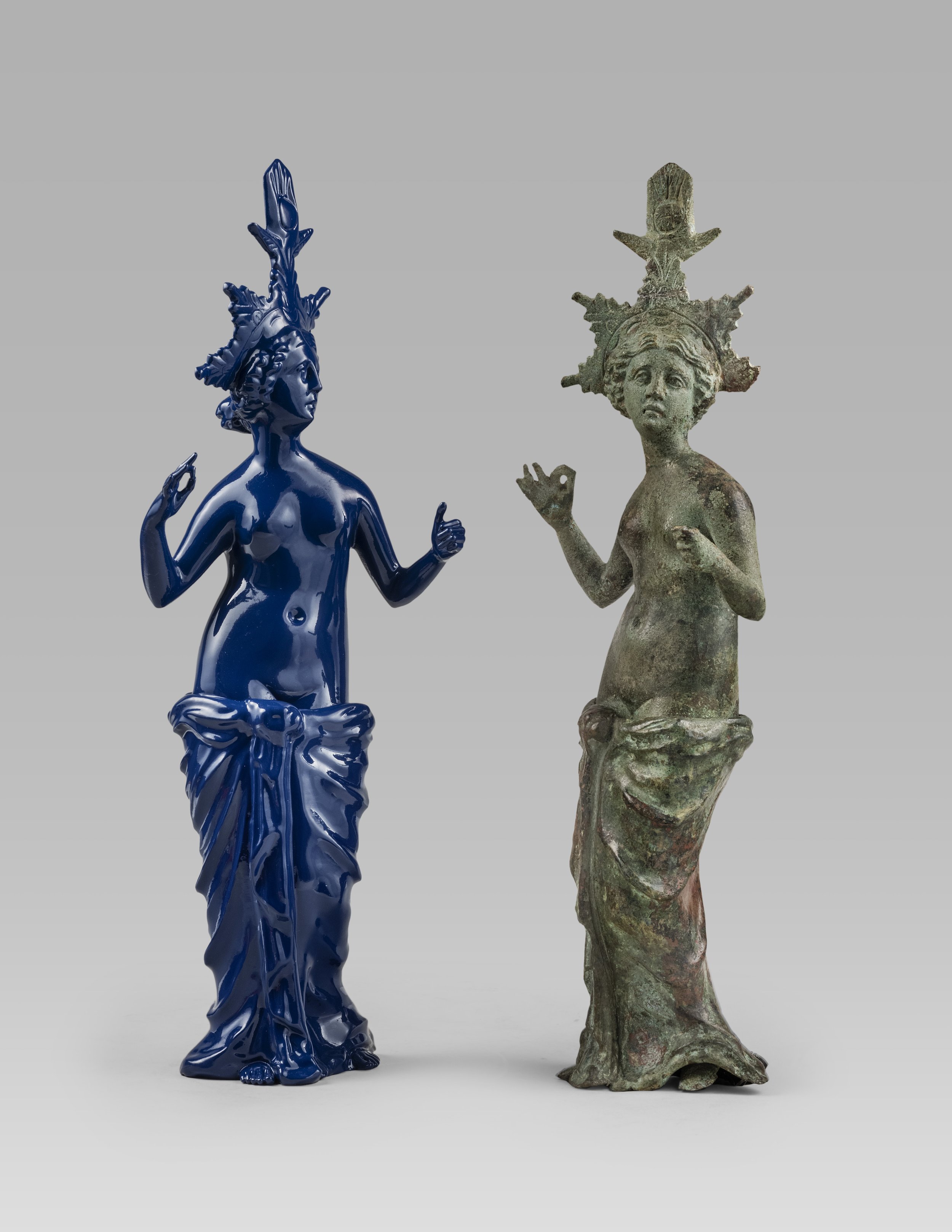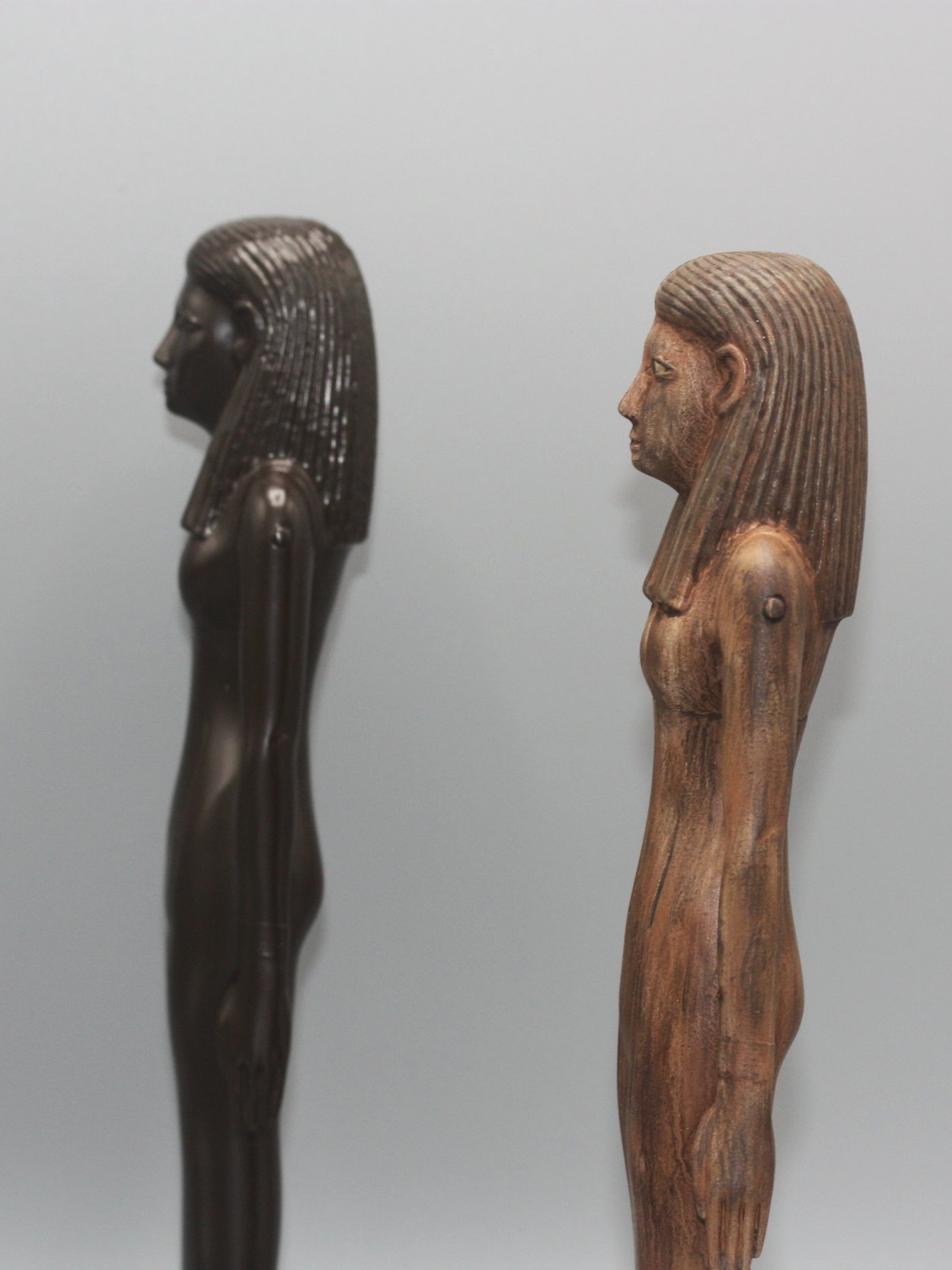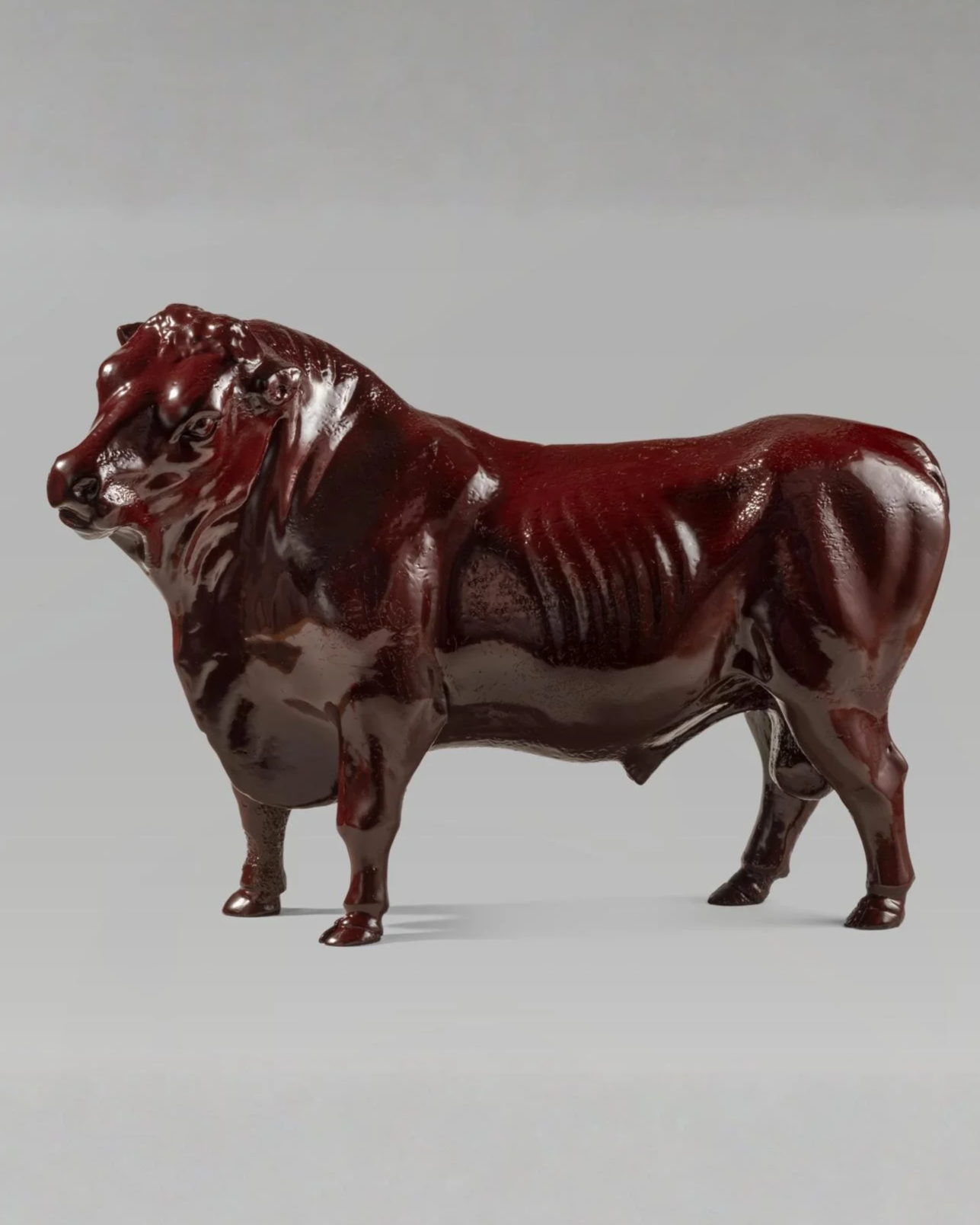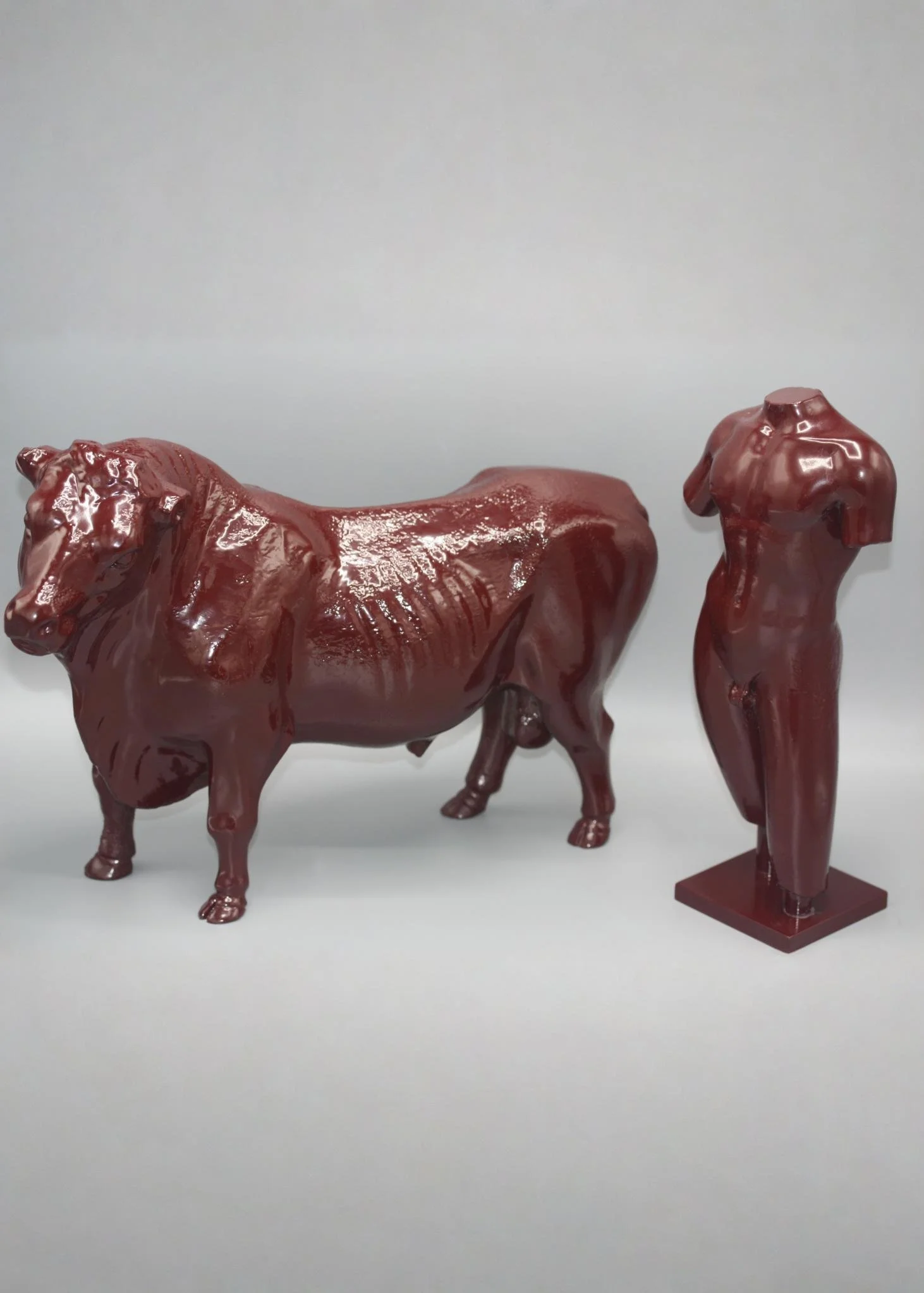 Image 1 of 2
Image 1 of 2

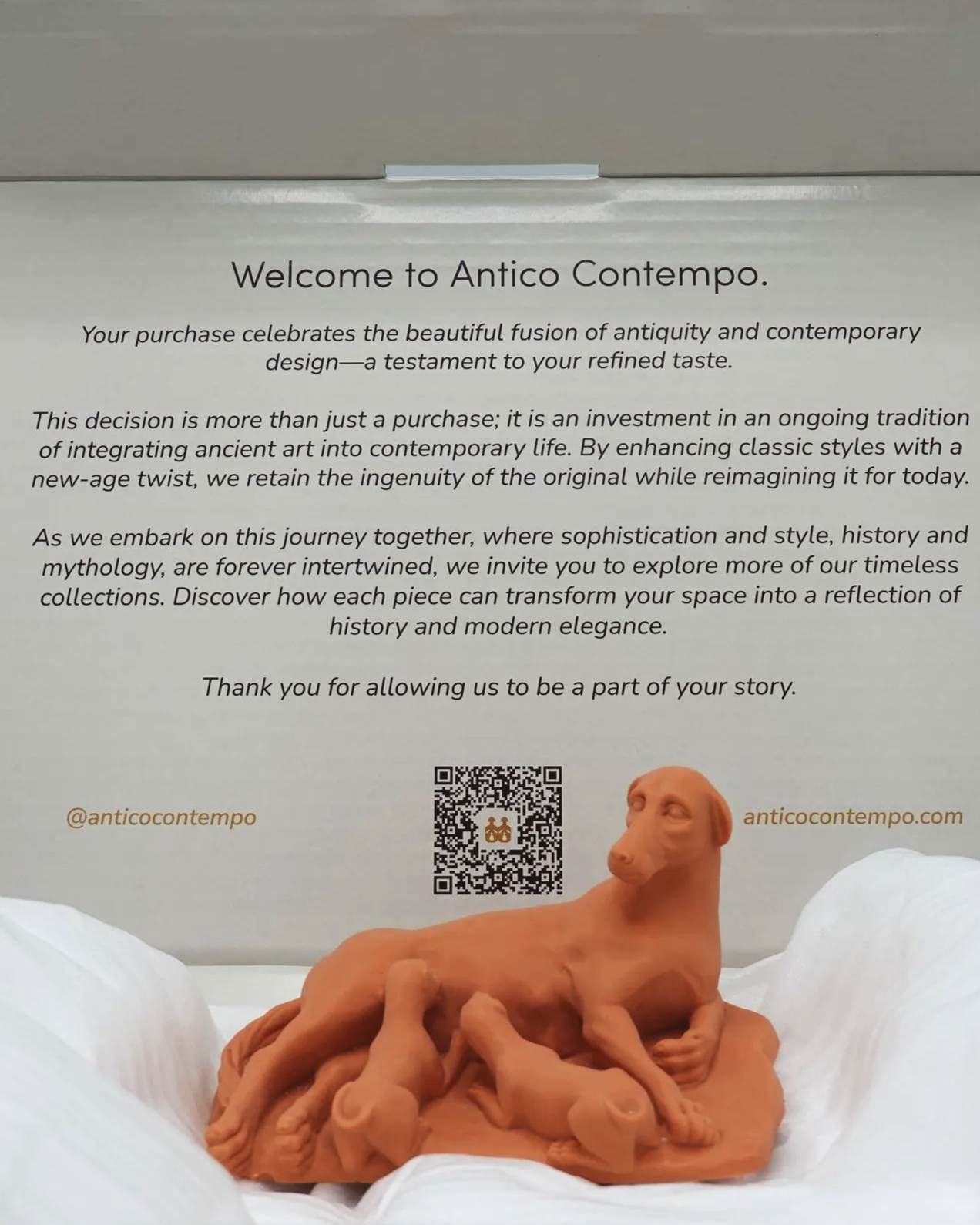 Image 2 of 2
Image 2 of 2



Roman Mother Dog
Alexander Aboutaam
Limited Edition of 3
Contempo
2024
High-grade. apricot hue polyresin, finished by hand
Compact —H: 7.6 cm (3 in) – W: 12.7 cm (5 in) – L: 12.7 cm (5 in)
Classic — H: 14.2 cm (5.6 in) - W: 27.5 cm (10.8 in) - L: 19.0 cm (7.5 in)
Ancient Original
Graeco-Roman, 1st century B.C. - 1st century A.D.
Marble
H: 27.0 cm (10.6 in) - W: 45.7 cm (18 in) - L: 32.0 cm (12.5 in)
Description
This Contempo piece is inspired by one of the finest surviving ancient representations of dogs. The Roman original, carved from a distinctive marble veined with warm tones, finds new life here in a fresh, soft apricot hue.
This group is remarkable for its keen observation of movement and its lifelike rendering. A mother dog, lying prone and stretching her weary limbs, lifts her head to check on two newborn pups. Still blind and unsteady on fragile feet, they nurse eagerly, their tiny tails curling with instinctive delight.
The mother, frail from birth, shows recessed, tired eyes beneath pronounced brows, her ribs and dorsal bones delicately exposed. Every detail is carefully modeled—the short coat, the subtle drillings at the nostrils and whiskers, the incised eyelids, the long tail’s texture, even the pads beneath her paws. A vein traced on the hind leg reveals the artist’s naturalism, yet he balances precision with harmonious, generalized forms, especially in the chest where sharp lines meet the pectoral muscles.
Serene and intimate, this small marble group would have adorned a garden or fountain of a villa. Similar figures—sleeping dogs and hunting scenes—are known from Pompeii and Herculaneum, where fierce hounds also appear attacking stags. The dog’s large paws and long muzzle suggest a hunting breed, akin to the famed marble bitch licking her wound in Rome’s Barracco Museum, a Roman copy after Lysippos’s celebrated bronze praised by Pliny the Elder. Such canine sculptures were fitting offerings to family-protecting deities like Juno or Diana, as dogs symbolized loyalty and healing.
Alexander Aboutaam
Limited Edition of 3
Contempo
2024
High-grade. apricot hue polyresin, finished by hand
Compact —H: 7.6 cm (3 in) – W: 12.7 cm (5 in) – L: 12.7 cm (5 in)
Classic — H: 14.2 cm (5.6 in) - W: 27.5 cm (10.8 in) - L: 19.0 cm (7.5 in)
Ancient Original
Graeco-Roman, 1st century B.C. - 1st century A.D.
Marble
H: 27.0 cm (10.6 in) - W: 45.7 cm (18 in) - L: 32.0 cm (12.5 in)
Description
This Contempo piece is inspired by one of the finest surviving ancient representations of dogs. The Roman original, carved from a distinctive marble veined with warm tones, finds new life here in a fresh, soft apricot hue.
This group is remarkable for its keen observation of movement and its lifelike rendering. A mother dog, lying prone and stretching her weary limbs, lifts her head to check on two newborn pups. Still blind and unsteady on fragile feet, they nurse eagerly, their tiny tails curling with instinctive delight.
The mother, frail from birth, shows recessed, tired eyes beneath pronounced brows, her ribs and dorsal bones delicately exposed. Every detail is carefully modeled—the short coat, the subtle drillings at the nostrils and whiskers, the incised eyelids, the long tail’s texture, even the pads beneath her paws. A vein traced on the hind leg reveals the artist’s naturalism, yet he balances precision with harmonious, generalized forms, especially in the chest where sharp lines meet the pectoral muscles.
Serene and intimate, this small marble group would have adorned a garden or fountain of a villa. Similar figures—sleeping dogs and hunting scenes—are known from Pompeii and Herculaneum, where fierce hounds also appear attacking stags. The dog’s large paws and long muzzle suggest a hunting breed, akin to the famed marble bitch licking her wound in Rome’s Barracco Museum, a Roman copy after Lysippos’s celebrated bronze praised by Pliny the Elder. Such canine sculptures were fitting offerings to family-protecting deities like Juno or Diana, as dogs symbolized loyalty and healing.
Creation
The creation of the contempo starts with research into authentic masterpieces, allowing Antico Contempo to determine how antiques can be thoughtfully reimagined through a contemporary lens. Every piece is examined to identify its unique qualities and what processes are required for adaptation.
High-resolution 3D scans are captured using structured light and infrared sensing, with real-time refinements made to preserve surface nuances and structural integrity. The raw data is reworked to create watertight, workshop-ready meshes.
Through a meticulous back-and-forth process of digital sculpting, 3D printing, and casting and molding, Antico Contempo creates a physical art piece that combines aesthetics of both the ancient and contemporary world.





